mmcartalk
Expert
- Messages
- 4,155
- Reactions
- 2,675
MM Retro-Write-Up: VW Air-Cooled Beetle
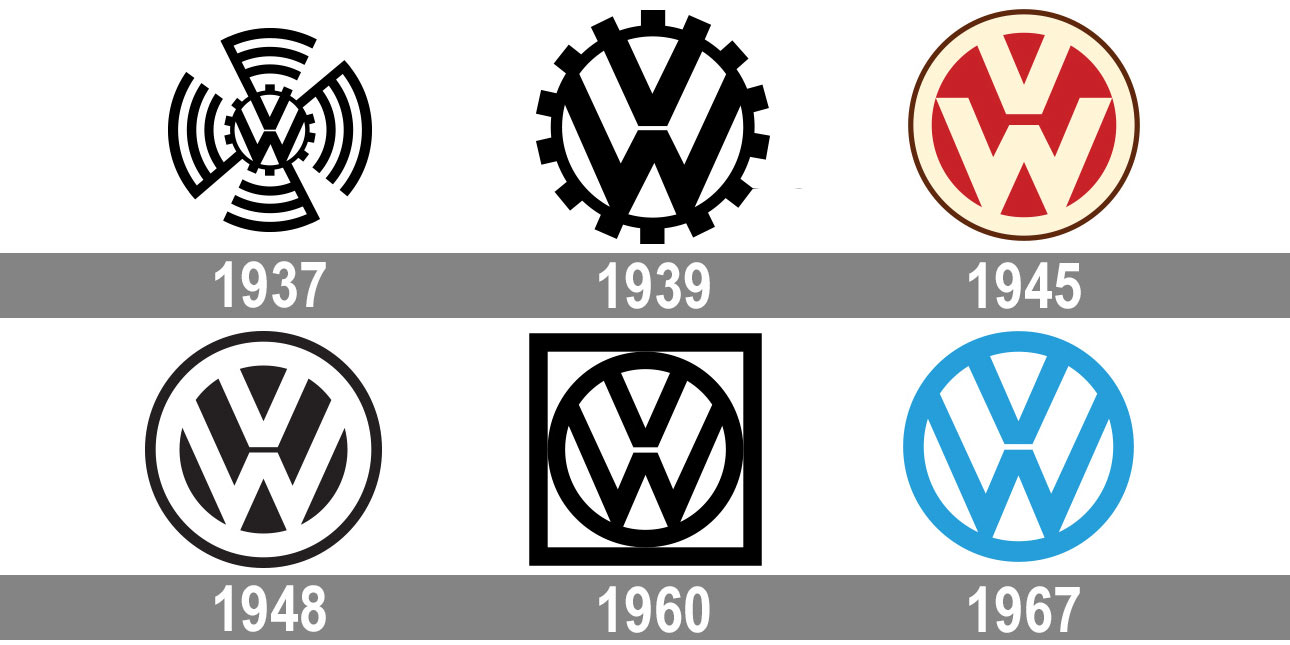

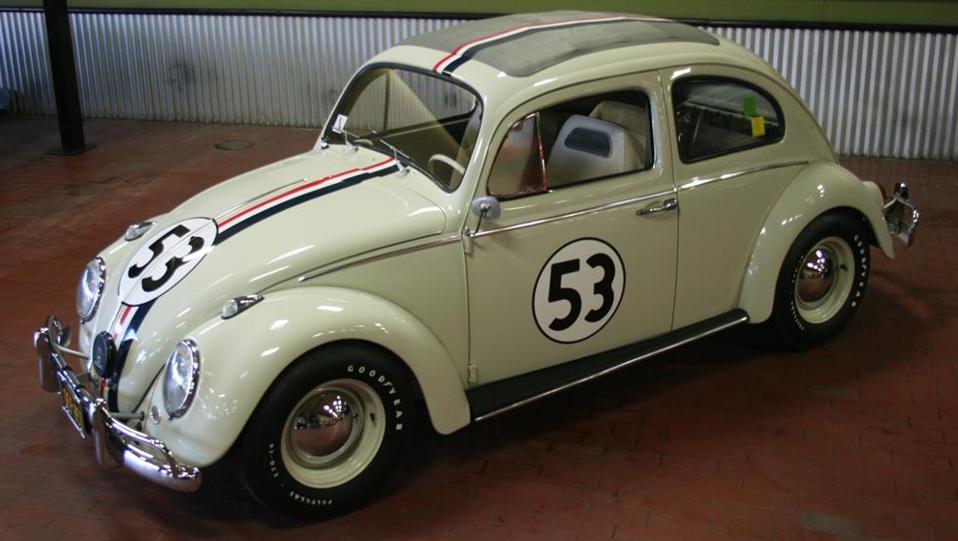
^^^^Herbie, the Love-Bug, from the movie.
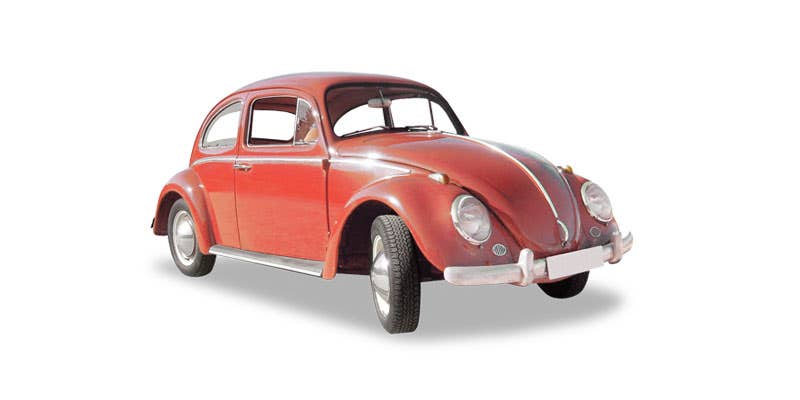
^^^Just like my brother's
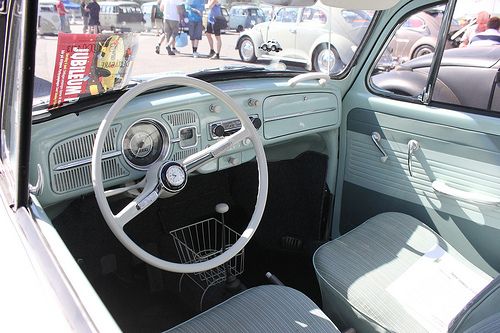


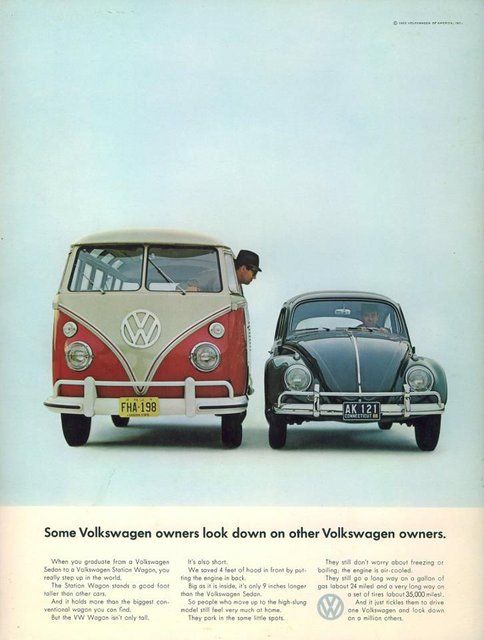
VW ads of that period were very sophisticated.
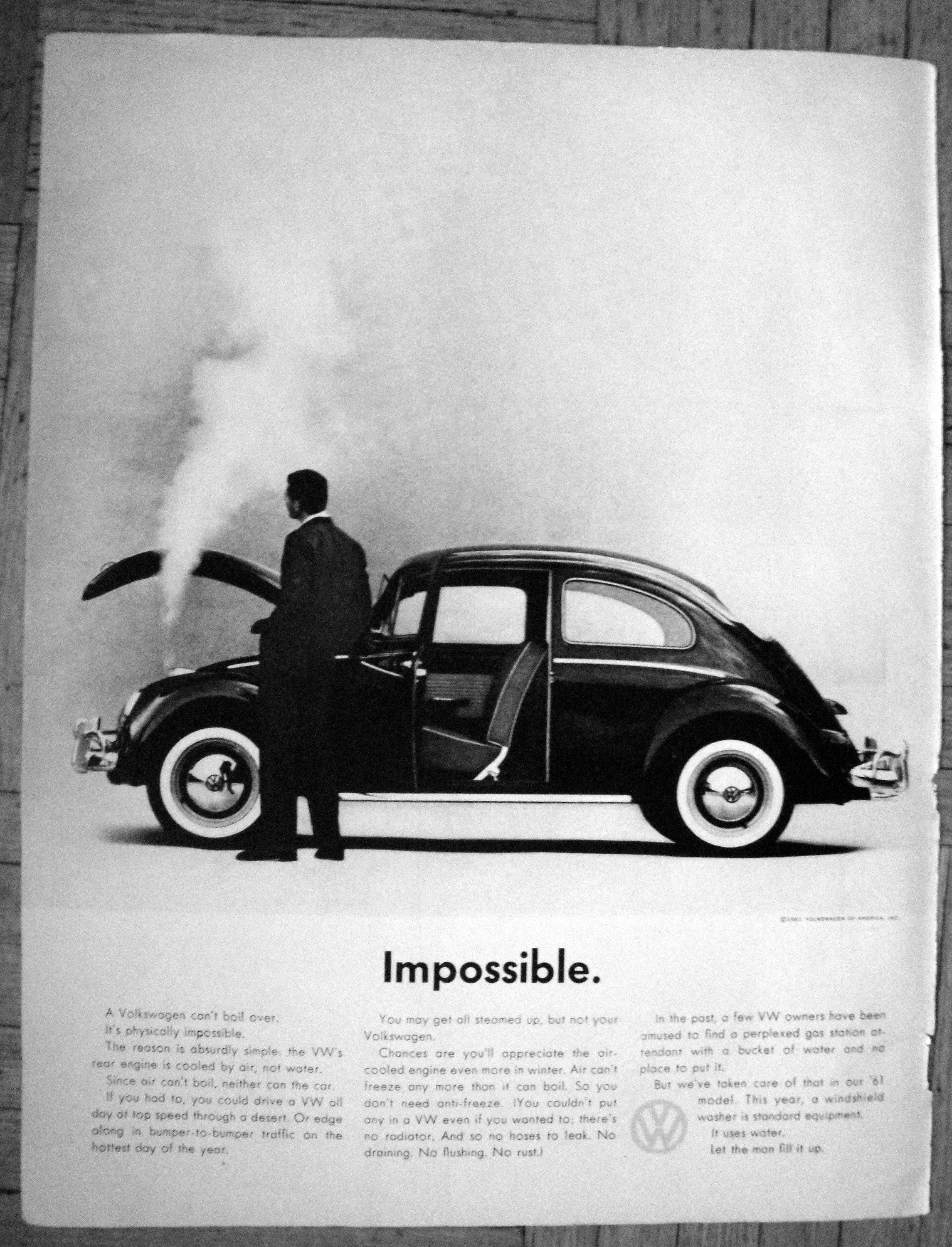
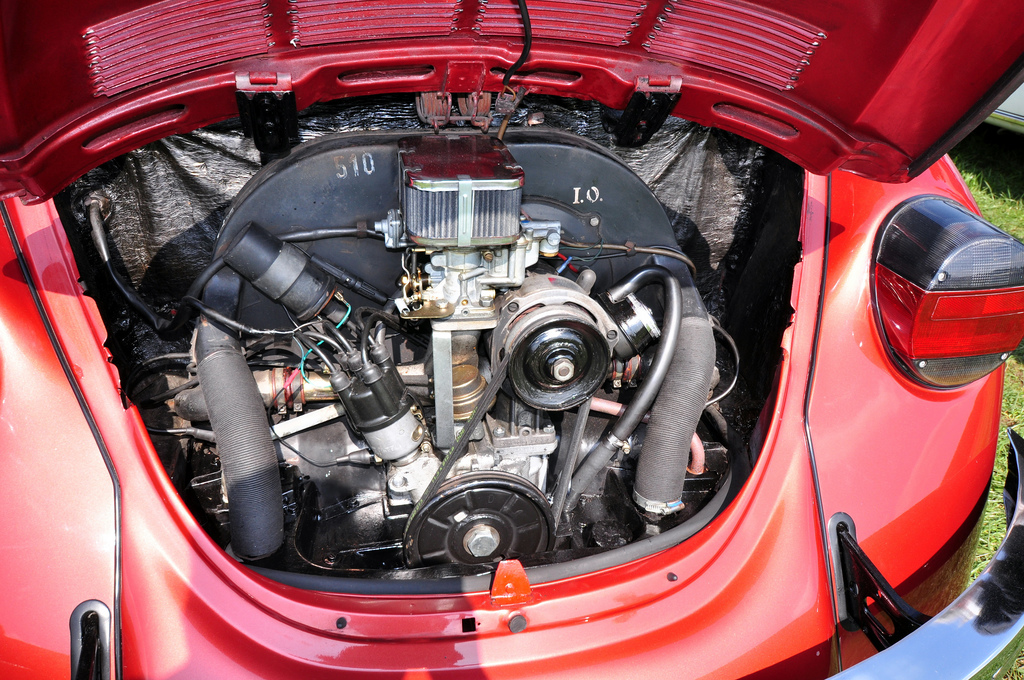
If one wants to talk about a truly ubiquitous vehicle, it is probably difficult to beat the famous air-cooled rear-engined VW Beetle....which, for decades, played fiddle with the Toyota Corolla for the title of the world's most popular passenger car ever. Production of the air-cooled versions did not end until 2003, in Pueblo, Mexico...after an almost 70-year run, although production of the more conventional, front-engined, liquid-cooled New Beetle versions (which, in effect, was a VW Golf-chassis with a somewhat-retro-Beetle body) lasted until July of 2019. Perhaps no other car in the U.S. (with the possible exception of the compact 1950s Nash/Rambler) was more responsible for making inroads into the traditional large-car American market, which by the late 1950s, had become mostly chrome-laden dinosaurs. Ever-increasing Beetle and Rambler sales forced the Big Three (Ford, GM, and Chrysler), in 1960-61, to introduce their own lineup of domestic compacts, one of which (the air-cooled rear-engined Chevrolet Corvair) strongly-imitated the Beetle's general layout, though with a number of safety-problems.
To understand the air-cooled Beetle's origins and growth, one must go back to Germany in the 1930s.....in the midst of a serious worldwide economic Depression. Adolf Hitler, the German Chancellor (and eventual dictator) had just come to power, and one of his well-known obsessions was a strong jealously / admiration for Henry Ford and what Ford had accomplished in the U.S., with the Model T, perfection of automotive mass-production techniques, and the moving assembly line. Ford had literally, for the first time in its history, put the American nation on wheels, and Hitler, although he and the other Nazi leaders rode around in custom-built Mercedes and Maybach limos / cabriolets, had a similar dream of a small, simple, inexpensive Volks-Wagen, or "People's Car" for the Germans. (OK, now you know where the name originated). In Italy and France at the time, small, similar, ubiquitous People-Cars were being developed by Fiat, Renault, and Citroen, so Hitler ordered Dr. Ferdinand Porsche to come up with a suitable design for mass-production in Germany.
Dr. Porsche turned to Czechoslovakia, next door, and its somewhat larger rear-engined/air-cooled Tatra vehicles as an inspiration/starting point, and, after some work of his own and his assistants, came up with the first Beetle as we know it today. And Germany was far ahead of the U.S. (and most other countries at that time) in construction of the high-speed/limited-access Autobahn Highway system...that would not come to the U.S. until the late 1950s into the 1960s. But, despite a far superior highway system, the early Beetles never transformed German life and mobility in the 1930s as the Model T had done in the U.S., despite our then-antiquated road system. For one thing, except for a small pocket in the Ruhr, the Germans never had the same industrial capacity we did. And, by later on in the 1930s, Hitler was, of course, using most of that available capacity to re-arm for what was to become World War II. Many, of not most, of the early Beetles ended up being used by the German military...along with other military vehicles using the ubiquitous air-cooled powerplant. Then, of course, during the war, the plants producing Beetles and other air-cooled vehicles for the military were heavily damaged by Allied bombing. A dark side of that production, during the war, was that forced-labor from slaves and POWs was also used in the plants....which only added to the already-extensive (and still-growing) list of Nazi atrocities. After the war, the whole Eastern part of the country was Soviet-occupied, and Western companies/capitalism was simply not allowed to operate there. So, for these, and a number of other reasons, the Beetle did not really get West Germany rolling until the 1950s, some twenty years after first-envisioned, after the country and its damaged factories had been reconstructed, and the American/British/French occupation forces removed....though NATO forces stayed on.
And, of course, by the 1950s, the Beetle was becoming a symbol of anti-materialism and a revolt against the enormous standard cars of the period in the U.S. Later, in the 1960s, it, and the larger VW Microbus, were adopted by the Counterculture movement...better-known as the Hippies. Even outside of the Counterculture, many people chose to purchase Beetles not only as a revolt against the huge American vehicles of the time, but also because of its better gas mileage, simplicity of design (no complex liquid-cooling-system), general mechanical reliability, and, most importantly, its excellent build quality and fit/finish. Beetles, at this time, were built during a period when West German factories were turning out some of the most carefully built products in the world....Japan was to follow some twenty years later, in the 1970s.
The air-cooled Beetle itself was a masterpiece of simple design in many ways, although it also had some faults, with a couple of those faults potentially serious...I'll get to those in a minute. Most of the overall design was quite reliable, though the small engine was often stressed with age, and valve-jobs or new piston-rings were common around the 60,000 mile mark or so....few engines in any vehicles back then, outside of the durable Chrysler Slant-Six, Chevy Stovebolt Six, and Mercedes/Peugeot diesels, could routinely go 100,000 miles or more without major repairs. Stopping distances were usually quite short, not only because of the rather large drum brakes themselves which resisted fading (a common problem back then), but also because, with the rear engine, the forward weight-transfer, on heavy braking, placed the approximate center of gravity in the middle of the vehicle instead of up front, where all four wheels/tires were forced by physics to do their equal share of the braking-load. Snow-tracton in the winter, despite the car's generally light weight, was good, because the weight of the engine and transmission were over the rear driving wheels. The small size provided good maneuverability and ease of parking in tight spaces....along with the light non-power steering effort from very little weight over the front wheels. The paint job was a jewel compared to most existing Detroit finishes. Fit/finish was excellent.....each car came off the line like it was assembled by Elves from the Black Forest (the Black Forest, of course, is in Germany itself LOL). Simple but quality materials were used inside and out. In fact, the car was so tightly-built that it was actually difficult to sink in a flood...for the most part, water simply could not get inside when the doors/windows were tightly-shut, and the vehicle would simply float like a boat. You had to crack a window open sometime to shut the doors solidly without resistance and air-buffeting inside. The car's quality was reflected in its very low depreciation as well. The synchronized 4-speed manual transmission shifted somewhat vaguely but smoothly, and the very light clutch was a breeze to engage, even in the days before hydraulically-operated clutches.
But the air-cooled Beetles, particularly the earlier ones, also had several weaknesses...some of them potentially serious. Like the Chevy Corvair, the swing-axle suspension design in the back, combined with the car's tail heaviness, made for squirrely handing and classic oversteer...you needed only very moderate steering-effort most of the time, and sharp curves were to be respected. The swing-axle suspension in back could cause dangerous tire-tuck-under during some too-aggressive maneuvers, which could toss the car on its side. The lack of weight up front over the steering-wheels, made the car somewhat unstable and prone to wander left and right on freeways, particularly in a crosswind. Though quality materials were used inside and out, there was little sound insulation, so the loud air-cooled engine always made a racket, even at low speeds. (Air-cooled engines are usually noisier than liquid-cooled ones because the water-jackets around the cylinders and in the engine-block absorb noise). Power level was quite low (40-55 HP), and you had to give yourself plenty of room to pull into traffic. The interior, being an ancient design, was not space-efficient, and could be cramped inside for tall persons. Instrumentation, particularly on the early ones, was a round speedometer, a couple of warning lights, and little else....even a gas gauge was omitted for some time, and to check the tank, you opened the front hood, unscrewed the gas-cap for the tank next to the firewall, and simply looked inside....some models had a stick and markings attached to the cap. There was little crash-protection up front....essentially nothing but an empty cargo area, and your head and face were very close to the windshield. The overall design was so unconventional that few shops during that period, outside of VW dealerships, knew how to work on them. And, one more thing...something the car became famous for. In the winter, the engine's very slow warm-up meant that you had to drive a hundred miles to get any warm or hot air out of the heater/defrost system...and then, if the exhaust-system was not 100% perfectly sealed, exhaust-gas and dangerous carbon monoxide could leak and enter the cabin's heat/defrost. Proper maintenance/inspection of this vehicle included numerous safety-checks of the exhaust-system.
My brother owned a bright red air-cooled Beetle for some time (don't remember exactly how long) in the early 1970s, at the same time I had a big Chrysler. I got to drive it several times, and sampled other air-cooled Beetles as well. Despite its well-known faults, I liked a number of things about them, particularly the excellent build-quality....which was hard to come by in many vehicles of that period. When VW started to convert to front-drive liquid-cooled vehicles in the mid-1970s (Dasher, Rabbit, Quantum, etc...), the drastic drop in quality was obvious. Starting around 1974/75 or so, VW service shops had long lines waiting for appointments each morning (I know....at that time, I worked right next to a VW shop). The last air-cooled Beetle sold in the U.S. was the convertible (Cabriolet), which was pulled from the American market at the end of that year, although production, as aforementioned, went on in Mexico until 2003.
And, as Always, Happy-Car-Memories.

MM
DRIVING IS BELIEVING




^^^^Herbie, the Love-Bug, from the movie.

^^^Just like my brother's



VW ads of that period were very sophisticated.


If one wants to talk about a truly ubiquitous vehicle, it is probably difficult to beat the famous air-cooled rear-engined VW Beetle....which, for decades, played fiddle with the Toyota Corolla for the title of the world's most popular passenger car ever. Production of the air-cooled versions did not end until 2003, in Pueblo, Mexico...after an almost 70-year run, although production of the more conventional, front-engined, liquid-cooled New Beetle versions (which, in effect, was a VW Golf-chassis with a somewhat-retro-Beetle body) lasted until July of 2019. Perhaps no other car in the U.S. (with the possible exception of the compact 1950s Nash/Rambler) was more responsible for making inroads into the traditional large-car American market, which by the late 1950s, had become mostly chrome-laden dinosaurs. Ever-increasing Beetle and Rambler sales forced the Big Three (Ford, GM, and Chrysler), in 1960-61, to introduce their own lineup of domestic compacts, one of which (the air-cooled rear-engined Chevrolet Corvair) strongly-imitated the Beetle's general layout, though with a number of safety-problems.
To understand the air-cooled Beetle's origins and growth, one must go back to Germany in the 1930s.....in the midst of a serious worldwide economic Depression. Adolf Hitler, the German Chancellor (and eventual dictator) had just come to power, and one of his well-known obsessions was a strong jealously / admiration for Henry Ford and what Ford had accomplished in the U.S., with the Model T, perfection of automotive mass-production techniques, and the moving assembly line. Ford had literally, for the first time in its history, put the American nation on wheels, and Hitler, although he and the other Nazi leaders rode around in custom-built Mercedes and Maybach limos / cabriolets, had a similar dream of a small, simple, inexpensive Volks-Wagen, or "People's Car" for the Germans. (OK, now you know where the name originated). In Italy and France at the time, small, similar, ubiquitous People-Cars were being developed by Fiat, Renault, and Citroen, so Hitler ordered Dr. Ferdinand Porsche to come up with a suitable design for mass-production in Germany.
Dr. Porsche turned to Czechoslovakia, next door, and its somewhat larger rear-engined/air-cooled Tatra vehicles as an inspiration/starting point, and, after some work of his own and his assistants, came up with the first Beetle as we know it today. And Germany was far ahead of the U.S. (and most other countries at that time) in construction of the high-speed/limited-access Autobahn Highway system...that would not come to the U.S. until the late 1950s into the 1960s. But, despite a far superior highway system, the early Beetles never transformed German life and mobility in the 1930s as the Model T had done in the U.S., despite our then-antiquated road system. For one thing, except for a small pocket in the Ruhr, the Germans never had the same industrial capacity we did. And, by later on in the 1930s, Hitler was, of course, using most of that available capacity to re-arm for what was to become World War II. Many, of not most, of the early Beetles ended up being used by the German military...along with other military vehicles using the ubiquitous air-cooled powerplant. Then, of course, during the war, the plants producing Beetles and other air-cooled vehicles for the military were heavily damaged by Allied bombing. A dark side of that production, during the war, was that forced-labor from slaves and POWs was also used in the plants....which only added to the already-extensive (and still-growing) list of Nazi atrocities. After the war, the whole Eastern part of the country was Soviet-occupied, and Western companies/capitalism was simply not allowed to operate there. So, for these, and a number of other reasons, the Beetle did not really get West Germany rolling until the 1950s, some twenty years after first-envisioned, after the country and its damaged factories had been reconstructed, and the American/British/French occupation forces removed....though NATO forces stayed on.
And, of course, by the 1950s, the Beetle was becoming a symbol of anti-materialism and a revolt against the enormous standard cars of the period in the U.S. Later, in the 1960s, it, and the larger VW Microbus, were adopted by the Counterculture movement...better-known as the Hippies. Even outside of the Counterculture, many people chose to purchase Beetles not only as a revolt against the huge American vehicles of the time, but also because of its better gas mileage, simplicity of design (no complex liquid-cooling-system), general mechanical reliability, and, most importantly, its excellent build quality and fit/finish. Beetles, at this time, were built during a period when West German factories were turning out some of the most carefully built products in the world....Japan was to follow some twenty years later, in the 1970s.
The air-cooled Beetle itself was a masterpiece of simple design in many ways, although it also had some faults, with a couple of those faults potentially serious...I'll get to those in a minute. Most of the overall design was quite reliable, though the small engine was often stressed with age, and valve-jobs or new piston-rings were common around the 60,000 mile mark or so....few engines in any vehicles back then, outside of the durable Chrysler Slant-Six, Chevy Stovebolt Six, and Mercedes/Peugeot diesels, could routinely go 100,000 miles or more without major repairs. Stopping distances were usually quite short, not only because of the rather large drum brakes themselves which resisted fading (a common problem back then), but also because, with the rear engine, the forward weight-transfer, on heavy braking, placed the approximate center of gravity in the middle of the vehicle instead of up front, where all four wheels/tires were forced by physics to do their equal share of the braking-load. Snow-tracton in the winter, despite the car's generally light weight, was good, because the weight of the engine and transmission were over the rear driving wheels. The small size provided good maneuverability and ease of parking in tight spaces....along with the light non-power steering effort from very little weight over the front wheels. The paint job was a jewel compared to most existing Detroit finishes. Fit/finish was excellent.....each car came off the line like it was assembled by Elves from the Black Forest (the Black Forest, of course, is in Germany itself LOL). Simple but quality materials were used inside and out. In fact, the car was so tightly-built that it was actually difficult to sink in a flood...for the most part, water simply could not get inside when the doors/windows were tightly-shut, and the vehicle would simply float like a boat. You had to crack a window open sometime to shut the doors solidly without resistance and air-buffeting inside. The car's quality was reflected in its very low depreciation as well. The synchronized 4-speed manual transmission shifted somewhat vaguely but smoothly, and the very light clutch was a breeze to engage, even in the days before hydraulically-operated clutches.
But the air-cooled Beetles, particularly the earlier ones, also had several weaknesses...some of them potentially serious. Like the Chevy Corvair, the swing-axle suspension design in the back, combined with the car's tail heaviness, made for squirrely handing and classic oversteer...you needed only very moderate steering-effort most of the time, and sharp curves were to be respected. The swing-axle suspension in back could cause dangerous tire-tuck-under during some too-aggressive maneuvers, which could toss the car on its side. The lack of weight up front over the steering-wheels, made the car somewhat unstable and prone to wander left and right on freeways, particularly in a crosswind. Though quality materials were used inside and out, there was little sound insulation, so the loud air-cooled engine always made a racket, even at low speeds. (Air-cooled engines are usually noisier than liquid-cooled ones because the water-jackets around the cylinders and in the engine-block absorb noise). Power level was quite low (40-55 HP), and you had to give yourself plenty of room to pull into traffic. The interior, being an ancient design, was not space-efficient, and could be cramped inside for tall persons. Instrumentation, particularly on the early ones, was a round speedometer, a couple of warning lights, and little else....even a gas gauge was omitted for some time, and to check the tank, you opened the front hood, unscrewed the gas-cap for the tank next to the firewall, and simply looked inside....some models had a stick and markings attached to the cap. There was little crash-protection up front....essentially nothing but an empty cargo area, and your head and face were very close to the windshield. The overall design was so unconventional that few shops during that period, outside of VW dealerships, knew how to work on them. And, one more thing...something the car became famous for. In the winter, the engine's very slow warm-up meant that you had to drive a hundred miles to get any warm or hot air out of the heater/defrost system...and then, if the exhaust-system was not 100% perfectly sealed, exhaust-gas and dangerous carbon monoxide could leak and enter the cabin's heat/defrost. Proper maintenance/inspection of this vehicle included numerous safety-checks of the exhaust-system.
My brother owned a bright red air-cooled Beetle for some time (don't remember exactly how long) in the early 1970s, at the same time I had a big Chrysler. I got to drive it several times, and sampled other air-cooled Beetles as well. Despite its well-known faults, I liked a number of things about them, particularly the excellent build-quality....which was hard to come by in many vehicles of that period. When VW started to convert to front-drive liquid-cooled vehicles in the mid-1970s (Dasher, Rabbit, Quantum, etc...), the drastic drop in quality was obvious. Starting around 1974/75 or so, VW service shops had long lines waiting for appointments each morning (I know....at that time, I worked right next to a VW shop). The last air-cooled Beetle sold in the U.S. was the convertible (Cabriolet), which was pulled from the American market at the end of that year, although production, as aforementioned, went on in Mexico until 2003.
And, as Always, Happy-Car-Memories.

MM
DRIVING IS BELIEVING

